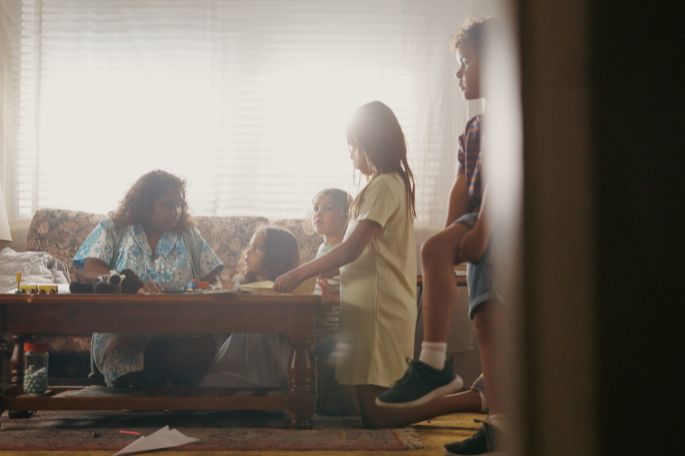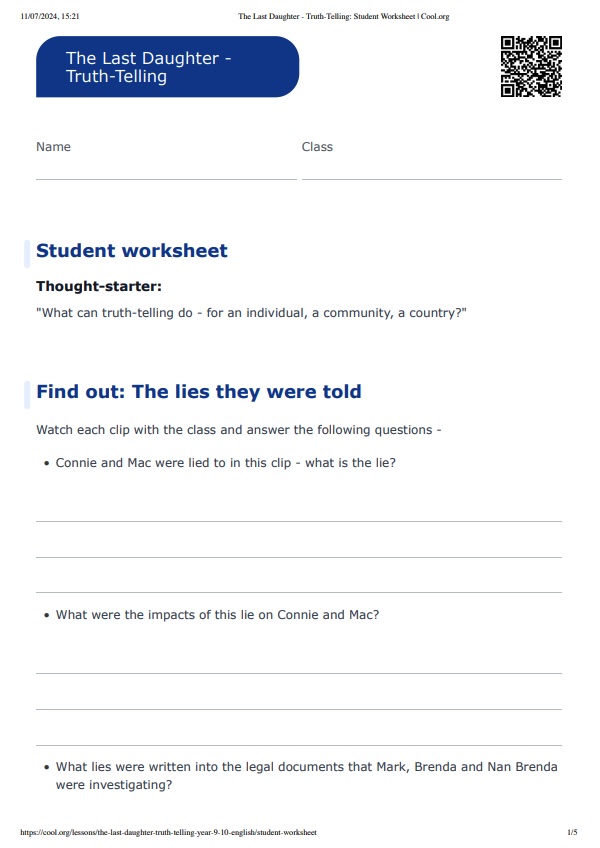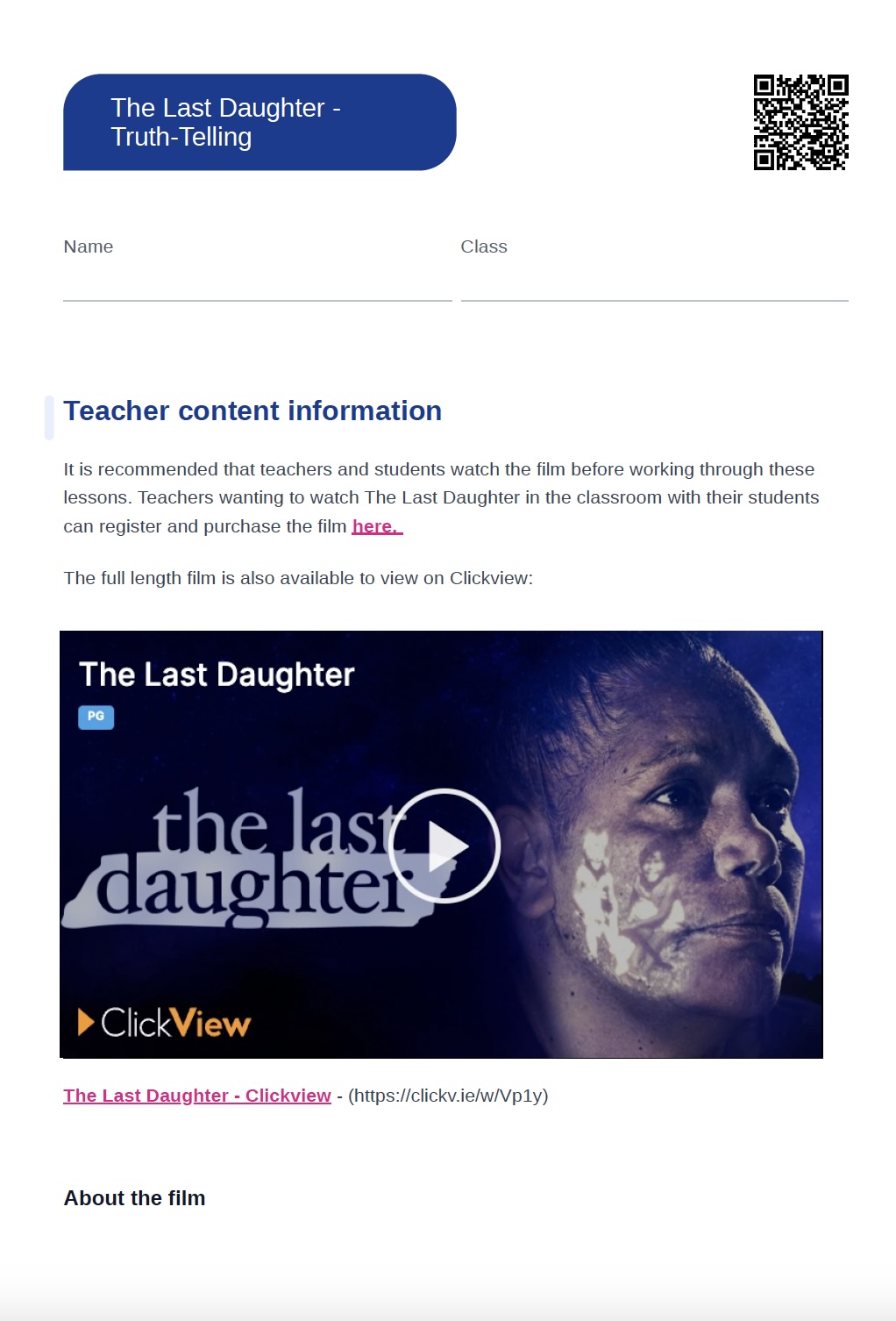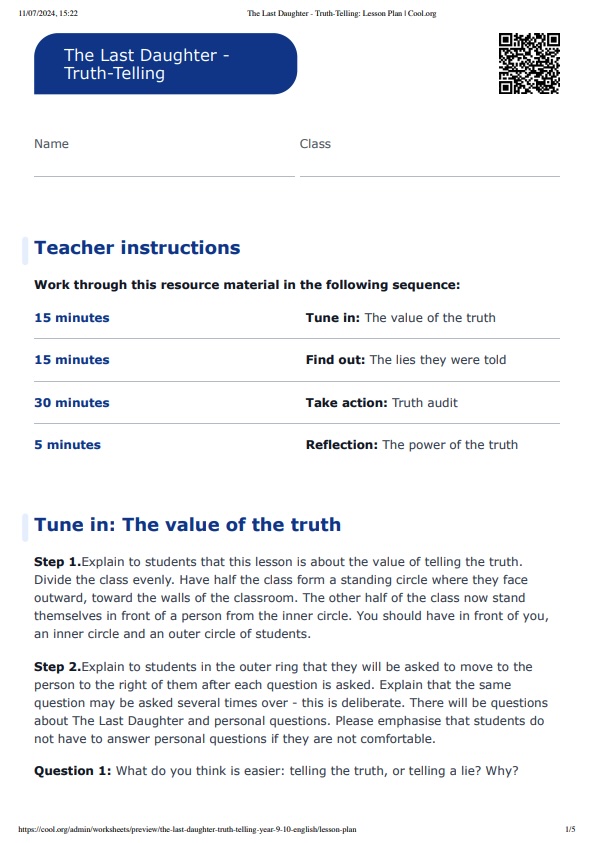Lesson summary
The histories we value the most determine a great deal about how we create the future. In this lesson, students use The Last Daughter as a vehicle to learn about the place of truth-telling in the process of reconciliation. Students will assess sources for accuracy, balance and cultural appropriateness in order to determine which sources are most likely to share truth or bias.
Learning intentions:
Students will...
- understand the concept and value of truth-telling and its importance for a reconciled Australian society
- analyse and evaluate sources pertaining to Aboriginal and Torres Strait Islander peoples’ histories and cultures in terms of representations and ethics.
Success Criteria:
Students can...
- explain the concept of and value in truth telling for a reconciled Australian society
- demonstrate an understanding of how to ensure that texts referring to Aboriginal and Torres Strait Islander peoples’ histories and cultures are respectful in their representations and ethics.
Lesson guides and printables
Curriculum links
Select your curriculum from the options below.
Lesson details
Curriculum mapping
Australian Curriculum (v9.0) content descriptions:
English:
Students will:
- analyse representations of individuals, groups and places and evaluate how they reflect their context in literary texts by First Nations Australian, and wide-ranging Australian and world authors (AC9E10LE01).
General capabilities: Literacy, Personal and Social Capability, Intercultural Understanding, Critical and Creative Thinking
Syllabus outcomes: EN5-8D
Cross-curriculum priority: Aboriginal and Torres Strait Islander Histories and Cultures.
Relevant parts of Year 9 & 10 English achievement standards:
By the end of Year 10, students interact with multimodal and literary texts. They analyse and evaluate representations of people, places, events and concepts, and how interpretations of these may be influenced by readers and viewers.
Resources required
- Access to The Last Daughter
- Device capable of presenting audio and video to the class
- Student laptops or access to schools’ devices (laptops, iPads etc)
- Student Worksheets - one copy per student.
- Writing materials
Skills
This lesson is designed to build students’ competencies in the following skills:
- communication
- critical thinking
- cultural understanding
- empathy
- social skills
Additional info
Teachers wanting to watch The Last Daughter in the classroom with their students can register and purchase the film here.
The film is also available to view on Clickview.
Level of teacher scaffolding: High - facilitate class discussion, read provided material to class, unpack difficult concepts.
Special thanks to:
Australians Together is a not-for-profit organisation that brings together non-Indigenous and First Nations staff, consultants and collaborators located across Australia. Their mission is to help non-Indigenous Australians listen and learn from First Nations people. Building a greater awareness of our shared history and its ongoing impact, gain a deeper respect for First Nations perspectives, and help pave the way for meaningful actions for an Australia together. You can learn more about Australians Together and their Learning Framework here.
Related professional learning
How to Teach Critical Thinking - Secondary
Quick summary: This course will help you to view the world with a more critical eye by introspectively exploring your own biases of thinking.




Welcome back!
Don't have an account yet?
Log in with:
Create your free Cool.org account.
Many of our resources are free, with an option to upgrade to Cool+ for premium content.
Already have an account?
Sign up with:
By signing up you accept Cool.org's Terms and Conditions(Opens in new tab) and Privacy Policy(Opens in new tab).